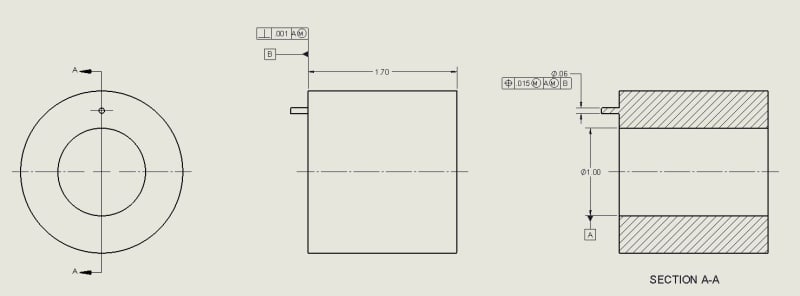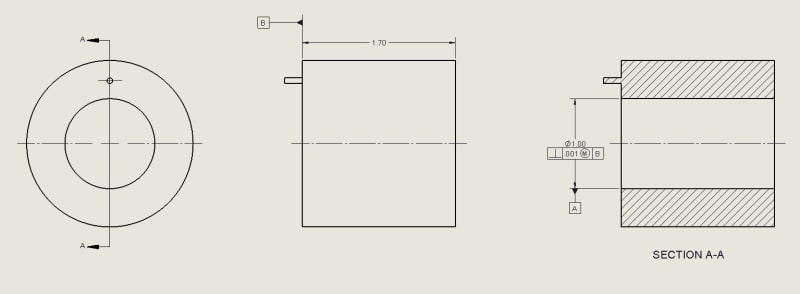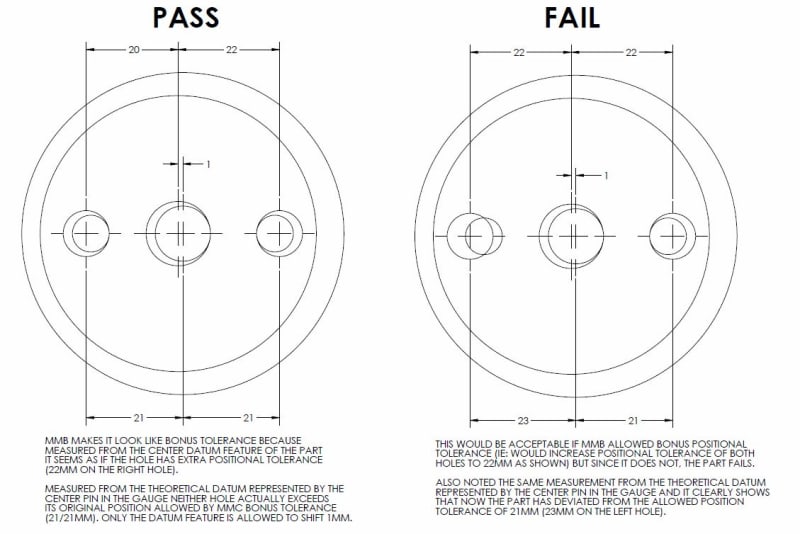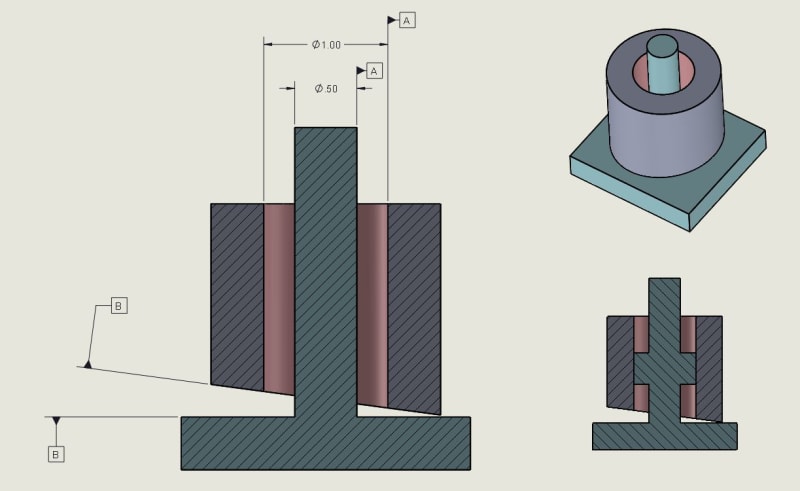Ev-36XPro
Mechanical
- Oct 9, 2018
- 6
(Per ASME Y14.5-2009)
I just ran into an old drawing which has what I have now learned is datum shift. This concept is quite new to me, but I have become the person to settle an argument of if the usage of it in a drawing is illegal or not (simple example below). The first picture is the drawing as is. One person is saying the use of MMB on Datum A for the perpendicularity requirement is illegal because you cannot have datum shift on a surface. I see where he is coming from because it does not make sense for a functional gauge (although this part is only inspected with a CMM). However our inspection team raised the point shown in the second drawing, which is would it be correct if you added the FCF to Datum A, referenced off of B. And would that result in the same part? So are both illegal, one, or neither?
Also is MMB used on the datum legally for the dowel pin? I believe so because both are axis and it makes the most sense for a functional gauge.

What the drawing actually is.

Inspection team's suggestion.

I also included this because it helped me better understand datum shift.
Thanks everyone!![[glasses] [glasses] [glasses]](/data/assets/smilies/glasses.gif)
I just ran into an old drawing which has what I have now learned is datum shift. This concept is quite new to me, but I have become the person to settle an argument of if the usage of it in a drawing is illegal or not (simple example below). The first picture is the drawing as is. One person is saying the use of MMB on Datum A for the perpendicularity requirement is illegal because you cannot have datum shift on a surface. I see where he is coming from because it does not make sense for a functional gauge (although this part is only inspected with a CMM). However our inspection team raised the point shown in the second drawing, which is would it be correct if you added the FCF to Datum A, referenced off of B. And would that result in the same part? So are both illegal, one, or neither?
Also is MMB used on the datum legally for the dowel pin? I believe so because both are axis and it makes the most sense for a functional gauge.

What the drawing actually is.

Inspection team's suggestion.

I also included this because it helped me better understand datum shift.
Thanks everyone!
![[glasses] [glasses] [glasses]](/data/assets/smilies/glasses.gif)

![[bowleft] [bowleft] [bowleft]](/data/assets/smilies/bowleft.gif) but just for design purposes it makes more sense to me to think of it as bonus tolerance
but just for design purposes it makes more sense to me to think of it as bonus tolerance ![[hammer] [hammer] [hammer]](/data/assets/smilies/hammer.gif) Ahhhh! Alright, it's datum shift!)
Ahhhh! Alright, it's datum shift!)
![[tiphat] [tiphat] [tiphat]](/data/assets/smilies/tiphat.gif)

![[thanks2] [thanks2] [thanks2]](/data/assets/smilies/thanks2.gif)